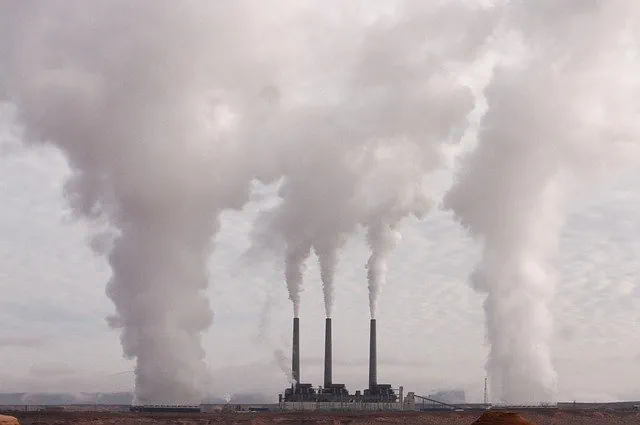
Ways to Reduce Air Pollution in Cities - 2022

Table of Contents
When you live in a polluted city, your family’s life can be in grave danger unless you take the proper precaution. According to the World Health Organization (WHO), approximately 1.7 million childrenunder five years pass every year due to pollution. Others also ail for long periods and face the risk of eventually succumbing.

Polluting factory. Pixabay
Cities worldwide understand the health problems associated with living in highly polluted environments and enact various policies to reduce the risk. However, everyone has a responsibility to reduce air pollution in their living environments.
If you want to reduce air pollution in your city, here’s what you can learn from different cities and do:
Turn Off Your Vehicle Engine
An idling engine consumes a lot of energy and creates a hot spot for air pollution. Cities know that huge trucks and buses release too many toxic substances into the air when their engines are idle. Many of them have enacted anti-idling laws to help them to deal with the situation.
New York City (NYC) has been implementing this policy. It criminalized the practice of allowing vehicles’ engines to idle for more than three minutes while stopping, waiting for something, or parking in 2009. This law is stricter near learning institutions in NYC. It allows motorists no more than one minute to switch off their engines.
New York introduced ambulances featuring idle reduction technology that detects and reports suspects for legal action. However, the law permits anyone to report non-compliant vehicles to the authorities.
Turning off your car’s idling engine reduces the likelihood of creating a dangerous hot spot for pollution. Due to its benefits, many cities are likely to continue enacting similar laws.
Use Public Transport
Many cities are also tackling emissions by enacting policies that encourage public transport but restrict car ownership. Some of the policies can also discourage motorists from accessing the city center. This is essential for reducing pollution and making public administration easy.
Here are some of the policies that promote the restrict car ownership and promote the use of public transport:
- Forcing motorists to park their vehicles in the outskirts of the city
- Introducing punitive parking fees
- Improving public transport
- Introducing a cost-effective car-sharing system
Freiburg is known as one of the cities that has been implementing this strategy for years. Its laws prohibit institutions and individuals from building parking areas on private land. Motorists have to park their cars in costly community-owned spaces.
The city, in return, offers reduced public transport rates and cheaper housing.
Los Angeles launched a demand-based parking system in 2012. It adjusts prices based on occupancy data.
Milan became the fifth city to introduce a congestion charge in its central business district in 2012. This coincided with falling congestion in the city.
From this, we can see that this is a tactic that you can adopt whether your city has similar laws or not.
Invest in Infrastructure to Improve the Experience of Cyclists and pedestrians
Major cities have set the aim of being among the world’s cycling destinations. They invest much money and effect measures geared towards making cycling easier, convenient, and fun. We can see this kind of arrangement in the Copenhagen policy agenda. However, many other cities are working on making cycling the best alternative means of transport.

Cyclist to the market. Source
In the city of Copenhagen, you find policies such as:
- Commercial buildings to feature 0.5 bicycle spaces for every employee
- Residential developments have 2.5 bike parking spaces in every 100 meter-squared space
Due to these initiatives, cycling is one of the most preferred modes of transport in Copenhagen. Workers and students make approximately 41 percent of trips to and from the city by bike.
Copenhagen values cycling more than that. Statistics indicate that 62% of these people commune to study and work by bike.
Many cities also believe that they can reduce air pollution by creating more room for pedestrians and cyclists on the road. Barcelona allows more cycling and crafts pedestrian-friendly laws to develop incentives for road users to switch from using cars.
Make the City Green
Many densely polluted cities are also implementing policies that help reduce the amount of carbon in the atmosphere.
These cities create green roofs, green belts, and parks since they play an essential role in their success.
Dresden, the second-largest city on the River Elbe, has set up special walls where they plant moss to clean the air. One of the walls is designed to filter as many particulates as 200 trees.
These green spaces can do the following:
- Improve the city’s air quality
- Convert toxic gases into Oxygen
- Remove particulates from the atmosphere
- Help cool cities
Promote E-Mobility
For most cities, the electric vehicle revolution is still a dream. They have tried to implement it to reduce air pollution without success. However, Norway is one among the few that have registered a significant degree of success in developing electric vehicles (EV).

Electric cars Pixabay
Over 70% of cars sold in Norway in 2020 were electric. The government expects it will stop selling vehicles with diesel and gasoline engines by 2025. Being the major cities in Norway, Oslo, Bergen, Stavanger, and Trondheim benefit from the nations’ e-mobility laws.
Oslo is currently known across the world as the biggest per-capita market for EVs. More than 30% of new cars sold in the city alone in 2015 and 2016 were plug-in hybrids.
The Norwegian government’s generous incentives since 2009 have significantly contributed to the growing demand for green vehicles throughout Oslo. They have made owning and operating EV cheaper than the air-polluting alternatives.
Some of the environment-friendly policies are:
- No import tax
- Access to bus lanes
- Free parking
- Free transport on ferries
The good news is that other cities are learning from Oslo.
Oslo is targeting 2025 as the deadline when all new cars will be zero-emission. London has set 2040 for the same.
California has not been left behind. It has been boosting the electric vehicle market through shared purchasing power. In 2017, California residents bought 350,000 EVs, close to half of all zero-emission vehicles in the United States.
With the increasing demand for zero-emission and technology availability, many nations will continue to exploit the technology to reduce air pollution in their respective cities.
Reduce Industrial Emissions
Cities are the industrial hubs of most nations, so they are more prone to pollution. Industrial wastes are, in part, the leading cause of global warming.
Most governments are mindful of this fact and are introducing the following measures to protect human health:
- Promote the use of ultra-low Sulphur diesel in industrial and commercial processes
- Shift away from non-renewable fuels like coal to cleaner fuel like natural gas to retrofit and control the emission of toxic gases
- Incentivize power companies to develop renewable energy
- Work jointly with other cities to tackle air pollution
Criminalize and Regulate the Burning of Garbage
When people burn garbage in cities, they increase the amount of carbon in the air. This is dangerous to our environment and health. In Minnesota and other places, it’s a criminal offense.
Other cities have also outlawed the practice of burning garbage using:
- Wood stove
- Burn barrel
- Fire-pit
Restrict Having Campfires in the City
Toxic gases coming from campfires can cause health complications for thousands or hundreds of thousands of people. This is often a significant concern whenever the weather is stagnant.
Some cities allow people to abide by specific principles when having campfires.
Some of the common recommended conditions are:
- Start a small campfire and keep it brief
- Don’t burn anything other than dry firewood (In the Greater Minnesota city, it’s illegal to burn wastes in any fire)
- Don’t start campfires when air quality alerts are in effect
Support Champions for Clean Air
Cities are investing more in encouraging people to become champions for clean air. These champions equip local businesses, city offices, and schools with the knowledge and skills they require to participate in reducing air pollution.
Champions of clean air should also report their concerns to the city leadership and collaborate with environmental conservation agencies. Besides, they need to share with others their reasons for sparing time to engage in environmental conservation initiatives.
Recycle and Reuse
The high pollution density in cities can cause a serious waste management problem. If an average American can generate more than four pounds of trash per day, each city in the nation generates too much per year.

Handmade envelope near a pen and pair of scissors. Source
Cities are recycling some of their used items to create space in landfills. For example, they turn too old aluminum and steel utensils and car tires into raw materials and reuse them to manufacture new materials in demand.
Others encourage households to reuse some old items. This method is simple as it doesn’t require the use of chemicals to treat the products. Families in your city can use their empty cooking fat containers to store salt and contribute towards environmental conservation without spending a lot of time or money.
Landfills generate dangerous gases like methane. So, it’s most welcome for individuals and families to reduce them by reusing and recycling items.
Concluding Ways to Reduce Air Pollution in Cities
There you have it. All cities are working hard to reduce air pollution, and a surprising amount of air pollution starts right at home. Everyone should be part of the solution. When your cities enact laws regulating the ownership of cars, use of fuel, production of commercial and industrial wastes, it is in the best interest of us to support the environment-friendly policies. However, you can also do more by borrowing nice ideas from other cities.